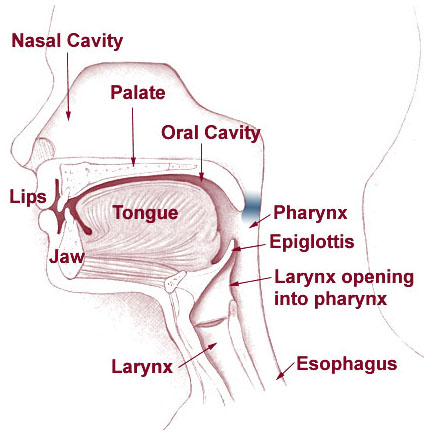We Can Reduce Oropharyngeal Cancer
04 April, 2017
By Kristen Power
Last year I sat in on a webinar presented by HPV and cancer expert Deanna Kepka, PhD, MPH from the College of Nursing and Huntsman Cancer Institute at the University of Utah. This wasn’t my first HPV webinar, and it wasn’t the first time I’d heard much of the information. But it was the first time I’d heard this:
“By 2020, HPV-positive oropharyngeal cancer squamous cell carcinoma (OPSCC) will surpass cervical cancer.”
To put it simply, in a few short years more people will be diagnosed with oropharyngeal cancer caused by HPV than will be diagnosed with cervical cancer. Oropharyngeal cancer occurs in the middle part of the throat including the tongue, tonsils, soft palate, and walls of the pharynx.
In the presentation, Kepka went on to note that researchers tested oropharyngeal tissue samples collected from three national cancer registries between 1984 and 2004 and found that the number of people with HPV-positive OPSCC more than tripled over that period, while the number of those with HPV-negative OPSCC fell by 50 percent.
HPV-negative oropharyngeal cancers can be caused by a number of risk factors (scroll down for a full list), but Kepka suggested that reductions in tobacco use over the past two decades has likely contributed to fewer cases of OPSCC.
Take a moment to think about that. We reduced the number of this type of cancer by reducing tobacco use. That’s prevention at work, and we can put it to work again to reduce future cases of HPV-positive OPSCC through HPV vaccination.
The HPV vaccination is cancer prevention, not just for cervical cancer but for numerous types of cancer that can be caused by the HPV virus. Those cancers include vaginal, vulvar, penile, anal, and yes, oropharyngeal cancers. Now recommended for boys and girls with just two doses to complete the series, HPV vaccination is perhaps the simplest way to prevent cancer.
Head and Neck Cancer Awareness Month
 I’m talking about oropharyngeal cancer because it’s Head and Neck Cancer Awareness Month and it’s one of the cancers that occurs in this region of the body. Other cancers in this region occur in the nasopharynx (the nasal cavity and sinus area) and the hypopharynx (the larynx or voicebox area).
I’m talking about oropharyngeal cancer because it’s Head and Neck Cancer Awareness Month and it’s one of the cancers that occurs in this region of the body. Other cancers in this region occur in the nasopharynx (the nasal cavity and sinus area) and the hypopharynx (the larynx or voicebox area).
Head and neck cancers account for about three percent of all cancers in the U.S., with an estimated 63,000 people diagnosed each year. About three quarters of those diagnoses are oropharyngeal cancers. The five-year survival rate for oropharyngeal cancers is about 64 percent, but survival rates increase when the cancer is found early.
Tobacco use and alcohol use are two substances that lead to the greatest increase in risk for these cancers. Additionally, as mentioned above, HPV infection is a risk factor and is found in two out of three oropharyngeal cancers.
Additional risk factors include:
- Gender – twice as common in men
- Age – more common in those age 55 and older
- Prolonged sun exposure
- Poor nutrition
- Weakened immune system
- Graft-versus-host disease
- Genetic syndromes
Many head and neck cancers are found through a general health screening examination with a primary care provider or by a dental provider. You’ve probably been screened and not realized it. The doctor will look in the nose, mouth, and throat for abnormalities, and feel for lumps in the neck. A dentist will check the mouth, under and around the tongue to screen for cancer.
Learn more about oropharyngeal and other head and neck cancers at the following sites:
Head and Neck Cancer Alliance
American Society of Clinical Oncology – Cancer.net
National Cancer Institute
And learn more about HPV vaccination from our partners at Immunize Nevada.